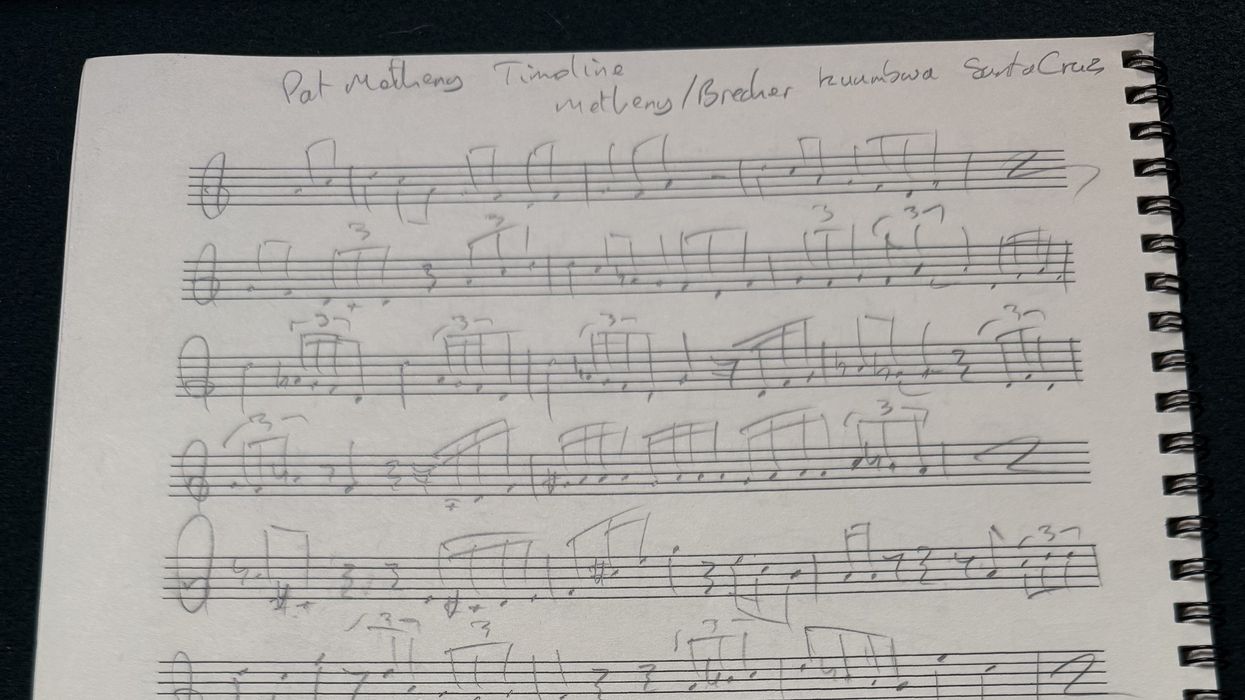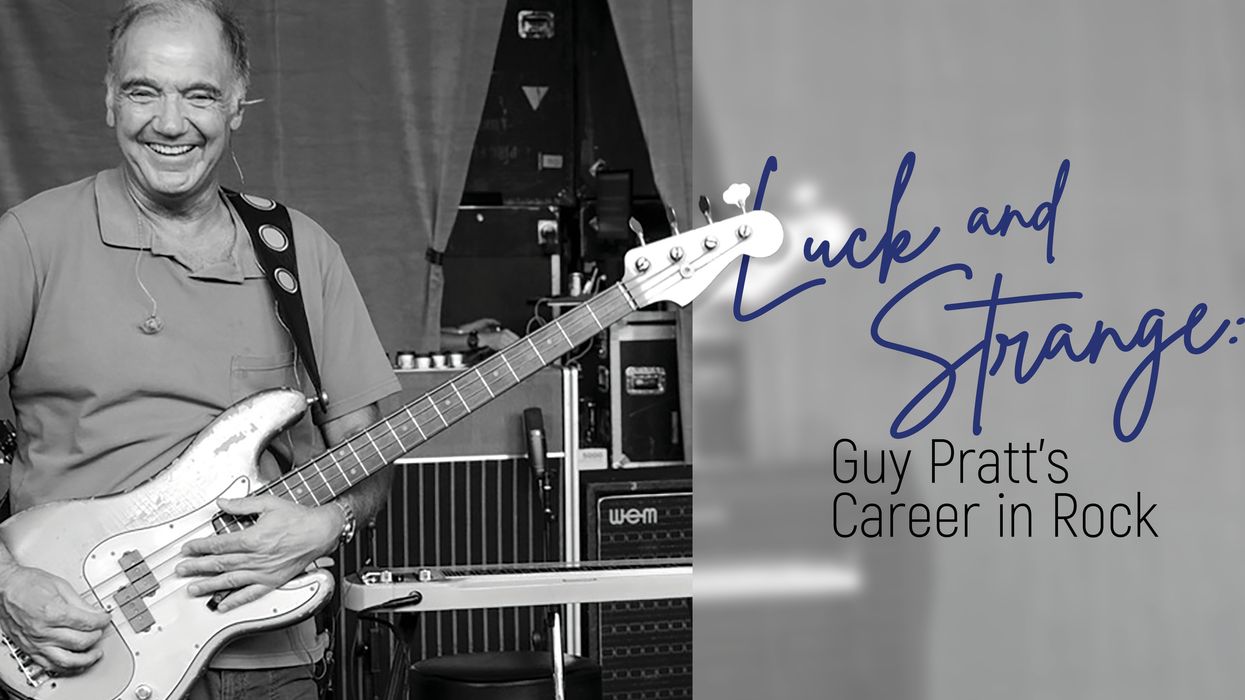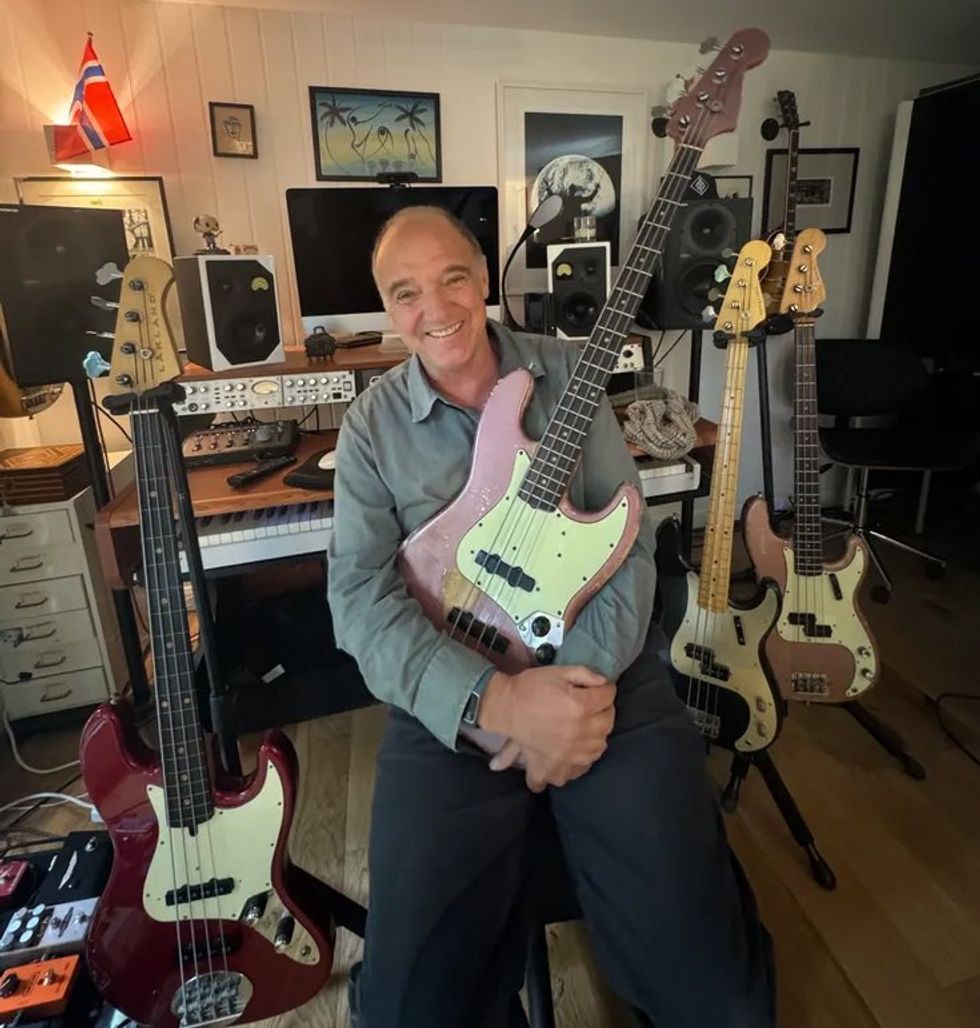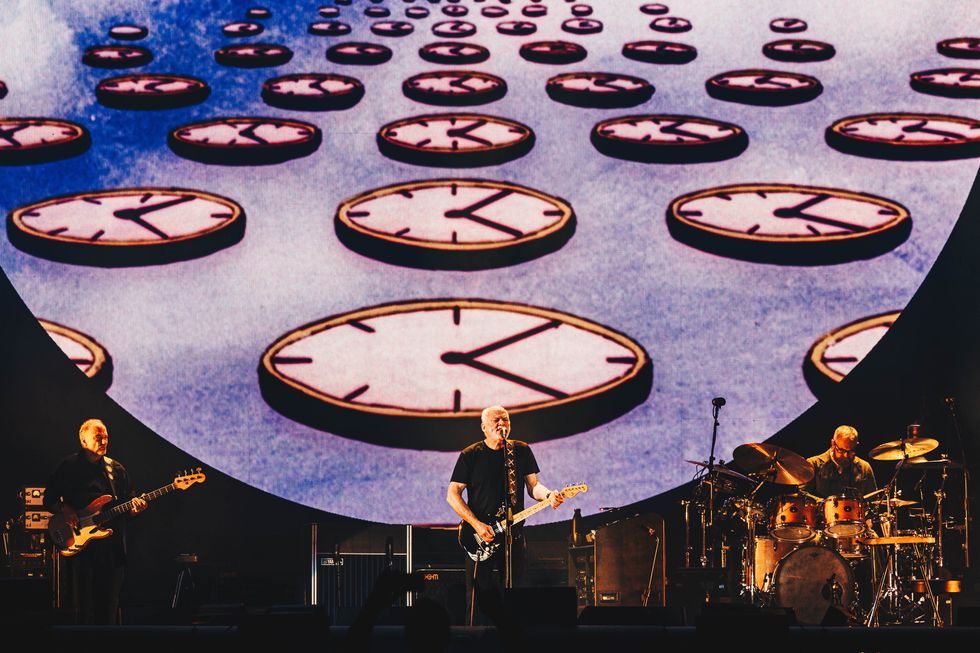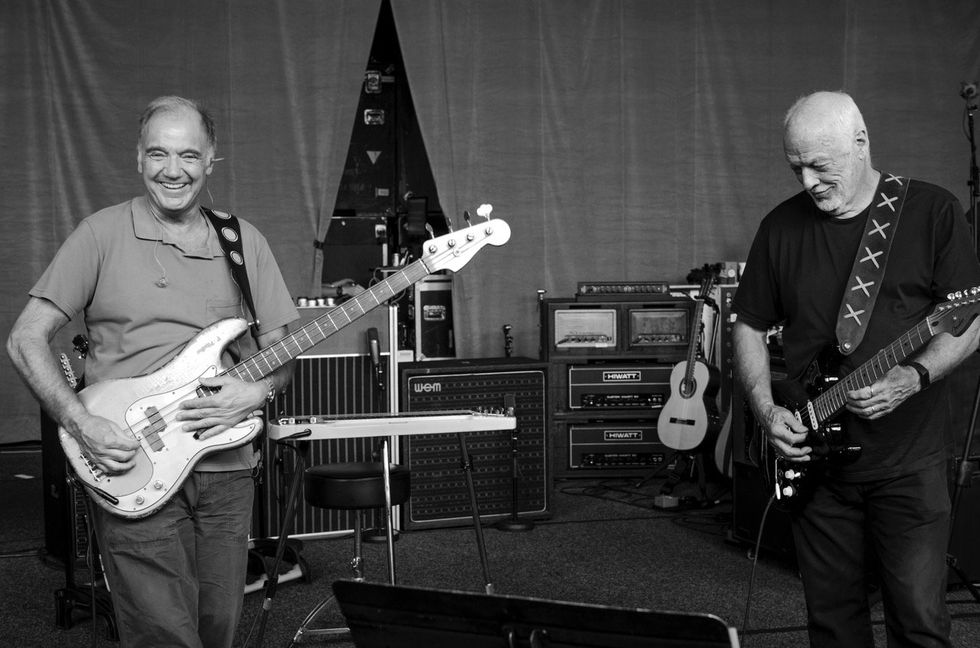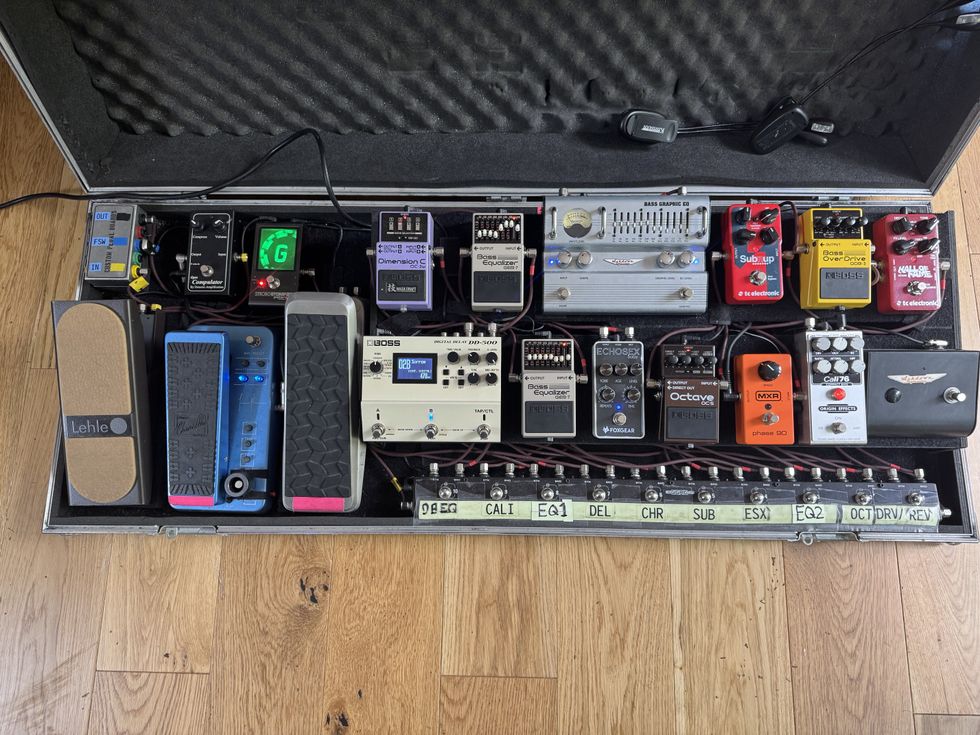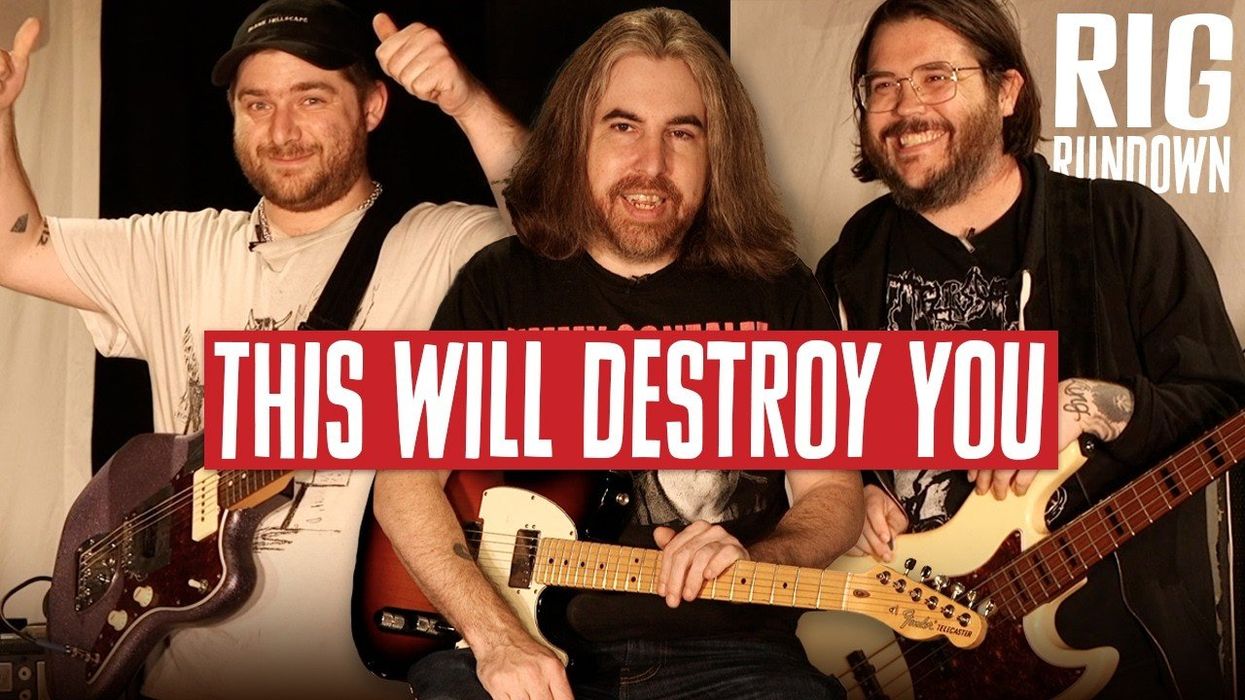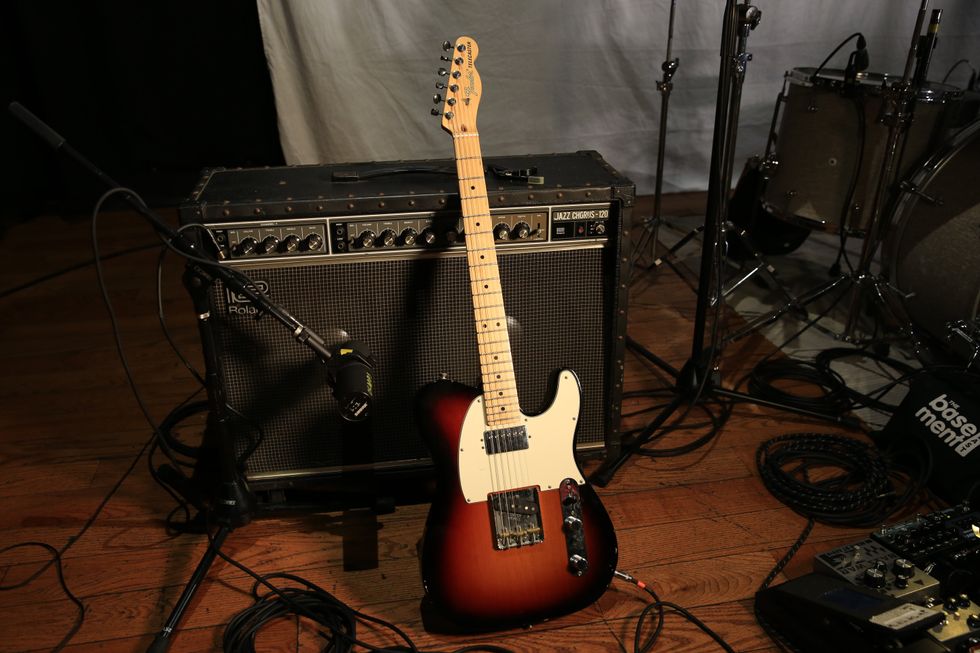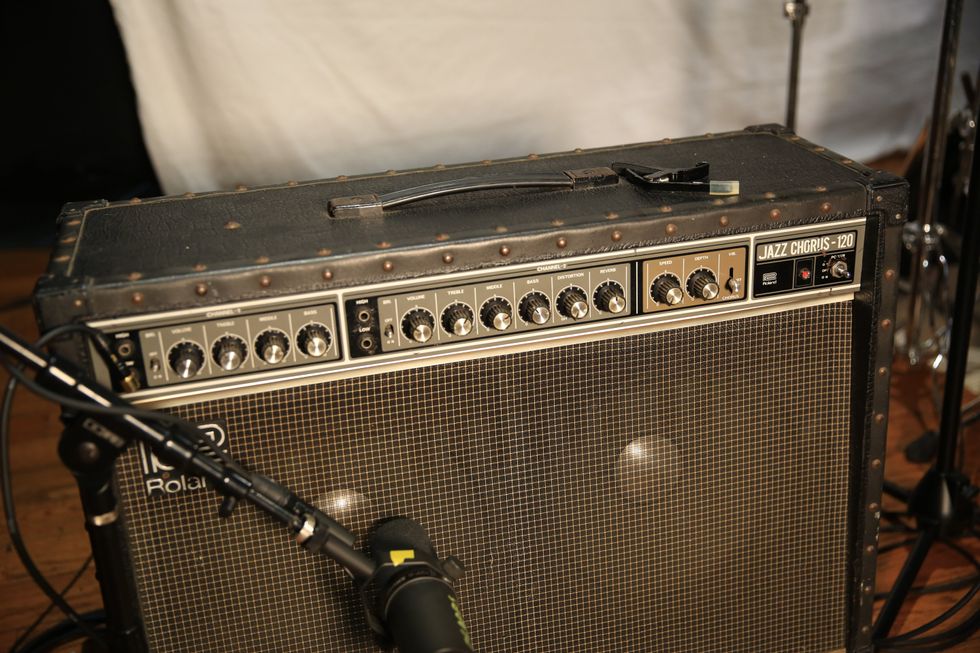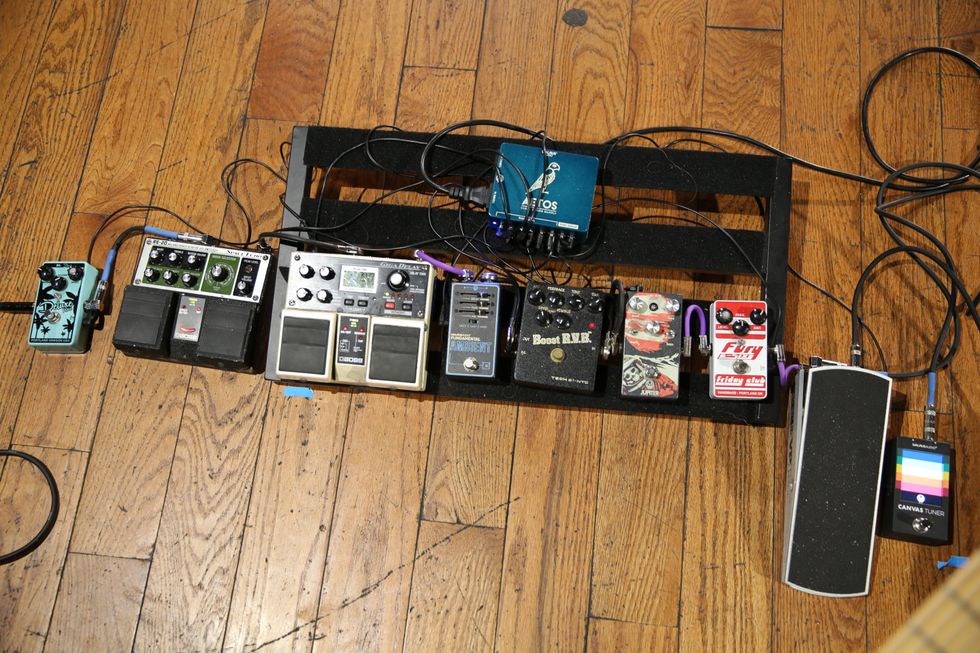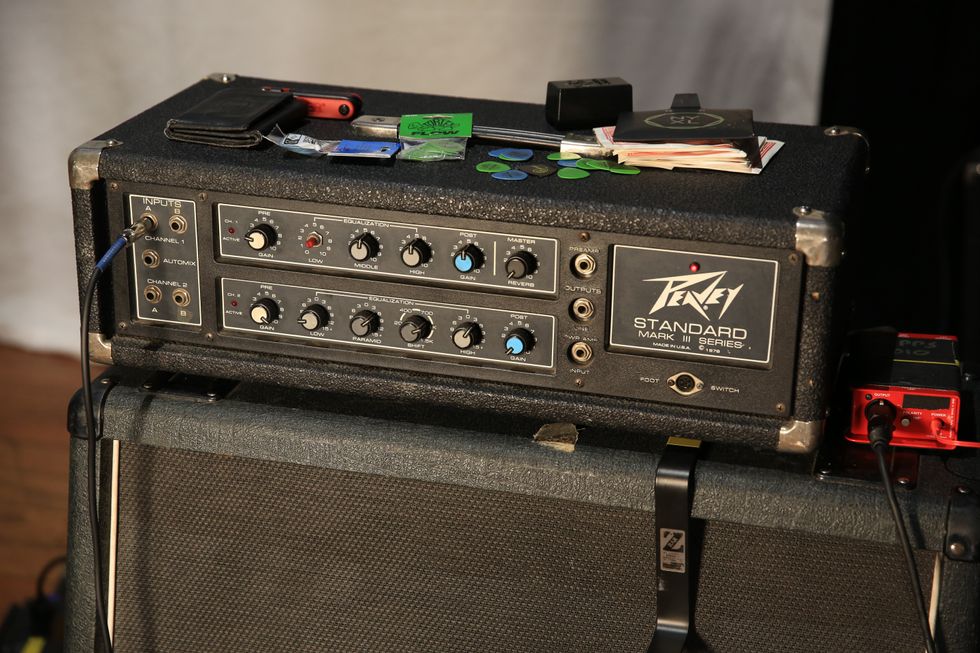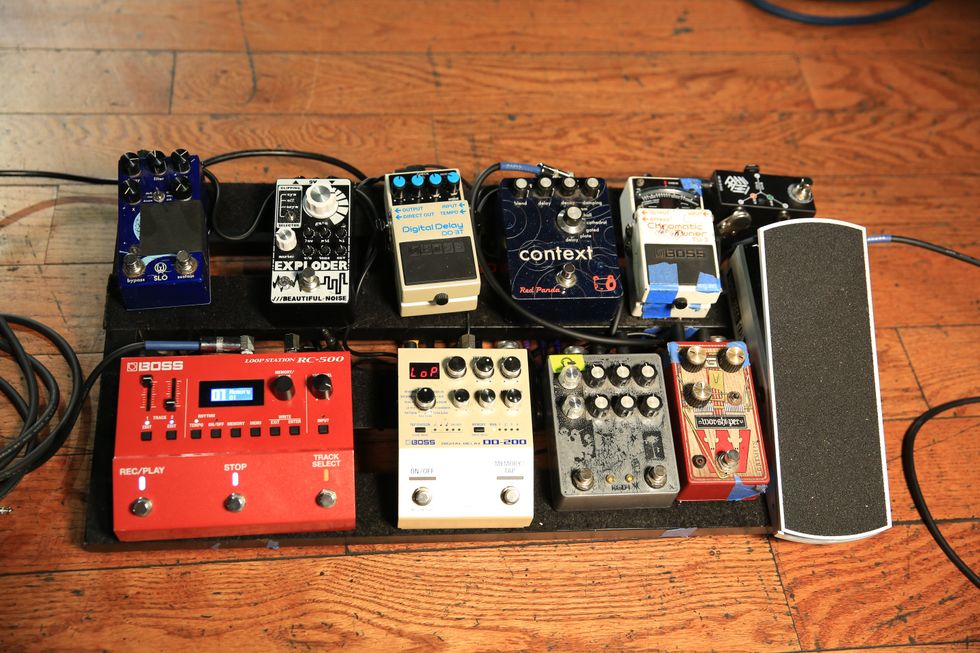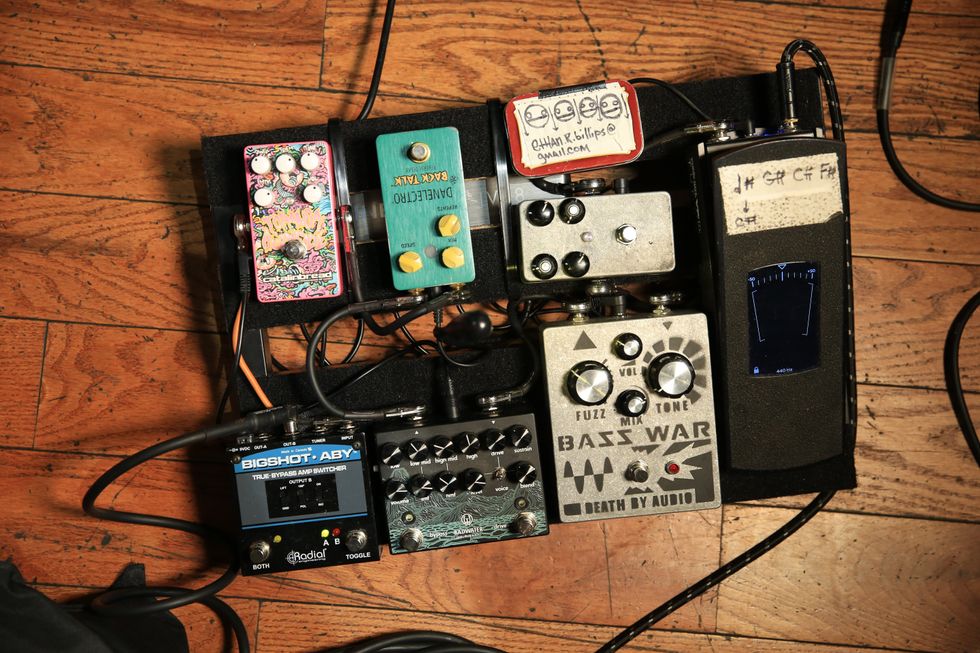Clip 1 - Bridge pickup, tone dial at 75 percent, volume dimed
Clip 2 - Neck pickup, tone dial at 75 percent, volume dimed
Schecter’s Michael Anthony signature bass has plenty in common with the prolific bassist’s playing style. Both have a reliable and rock-solid foundation for delivering the needed goods, but with a little panache here and there to keep things interesting. For Anthony fanatics who have found themselves priced out of owning one of his signature Custom Shop models, the more affordable South Korean-made Diamond Series bass harbors the sleek look and much of the underlying features of its U.S.-bred big brother, but without the eye-popping price tag.
Bottoms Up!
The subdued carbon-grey finish, matching headstock, creme binding, and black hardware on Anthony’s signature instrument give it a sleek and dangerous aura. The fretwork and finish looked impeccable when I scanned the neck and body up close, and its 9.3-pound weight made it a comfortable bass to play standing up while still feeling substantial strapped across my shoulder.
The bass takes several cues from Schecter’s Model-T line of basses and uses them as a foundation to build on. Anthony’s model has an alder body that sports a large single-ply black pickguard. The large-bodied THD4 bridge allows for stringing through the bridge or through the body.
For pickups, Anthony’s bass forgoes the active EMG electronics of the Model-T in favor of a USA MonsterTone P/J set controlled by the master volume, tone, and 3-way selector mounted to a Tele-style control plate. The bass’ multi-ply maple and walnut neck is capped with a bound 21-fret rosewood fretboard, the strings are anchored with a Graph Tech XL Tusq nut, and the neck is attached to the body via a contoured 4-bolt neck joint.
Four on the Floor
The smooth, unfinished neck has a comfortable taper and soft-C profile, making for effortlessly quick transitions up and down the fretboard. There was some noticeable fret buzz when I first pulled the bass out of its shipping box, but I was able to remedy that with a quick adjustment to the truss-rod nut located at the body end of the neck. Thanks to Schecter’s forethought in carving a long channel to access the adjustment nut, I was able to easily perform the task without the irritation of pulling the neck off.
Once I plugged the bass into a Gallien-Krueger 400RB/Ampeg 8x10 pairing and selected the P-style pickup, I went to town playing the verse section of “Mean Street”—my favorite Anthony bass line. After striking the first note, I knew right away that this was a pickup built for power. It delivered a lot more volume than the vintage-voiced Lollar pickup in my P, and even slightly more than the Seymour Duncan Quarter Pounder in another Precision I have on loan.
Ratings
Pros:
Sleek look and solid build. Single-coil pickup is exceptionally full and lively.
Cons:
Would benefit from a blend knob. Bridge pickup sounds can be thin at times.
Tones:
Playability:
Build/Design:
Value:
Street:
$899
Schecter Diamond Series Michael Anthony Signature Bass
schecterguitars.com
The spilt-coil pickup conjured tremendously deep lows, and those lows supported a beefy midrange that brought a healthy dose of articulate punch with a sumptuous low-mid snarl. When I wanted to switch to more subdued lines and a less aggressive tone, the pickup was sensitive enough for me to control dynamics through technique. I wasn’t forced to reach for the volume or tone knobs—or the amp—most of the time. High marks aside, the lows lack some of the classic P-bass warmth. And while it doles out P-bass aggression in spades—which is great for rock and metal—the edginess of its highs doesn’t sit quite as well for mellower jazz, folk, and contemporary blues tones.
The tone made a 180-degree turn when I flipped to the J-style bridge pickup, however, which had a taut and lively low-end thump with a wonderful, rubbery response. Coupled with its scooped midrange and speedy picking response, pulling off involved slap-and-pop riffs was a piece of cake. The nuances of my fingerpicking were more easily heard and the pickup’s focus on accentuating the mids and highs helped flatpicked melodic riffs—à la Geddy Lee and Justin Chancellor—leap out with an extraordinary amount of vigor and precision. The sound wasn’t as full as what I got from the split-coil pickup, but I was able to coax out a little more girth using a vintage Ibanez CP9 compressor and some careful tweaking.
Together the pickups complimented each other beautifully by yielding a nice middle ground between the split-coil’s fat and proud delivery and the bridge’s drum-tight lows and quick response. While I liked the simplicity of the 3-way switching, I would have really liked the ability to experiment with blending the pickups to different degrees. Working the P-style pickup and bringing in the bridge pickup’s signal just enough for its snappy high end to be heard with harder picking is a sound I would have been interested in checking out.
The Verdict
Schecter’s Michael Anthony signature bass hits high marks for playability, tone, and simplicity. It’s not trying to reinvent the wheel, thankfully, because a bass geared for plugging in and rocking really shouldn’t have to. Heavier players will likely find that its stock pickups dish out more than enough volume and girth for the thickest of riffs. Vintage rockers, however, might find the output to be a little overwhelming at times. All said, if you’re looking for a solid bass without a ton of bling getting in your way, Anthony’s new tool of the trade is worth checking out.
Watch the Review Demo:


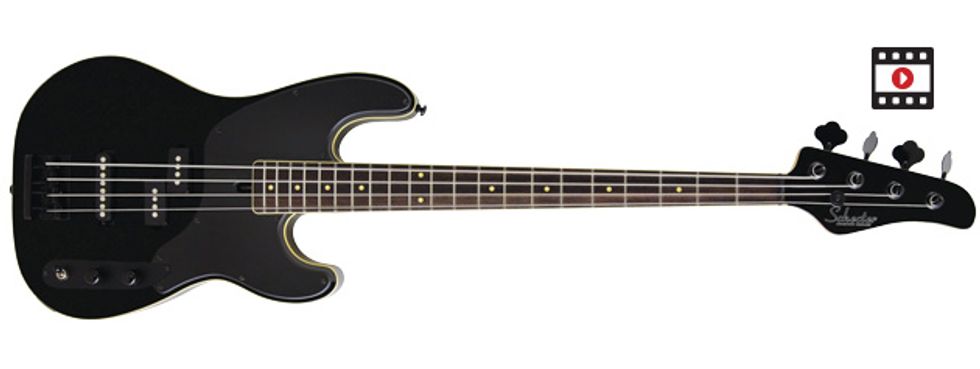



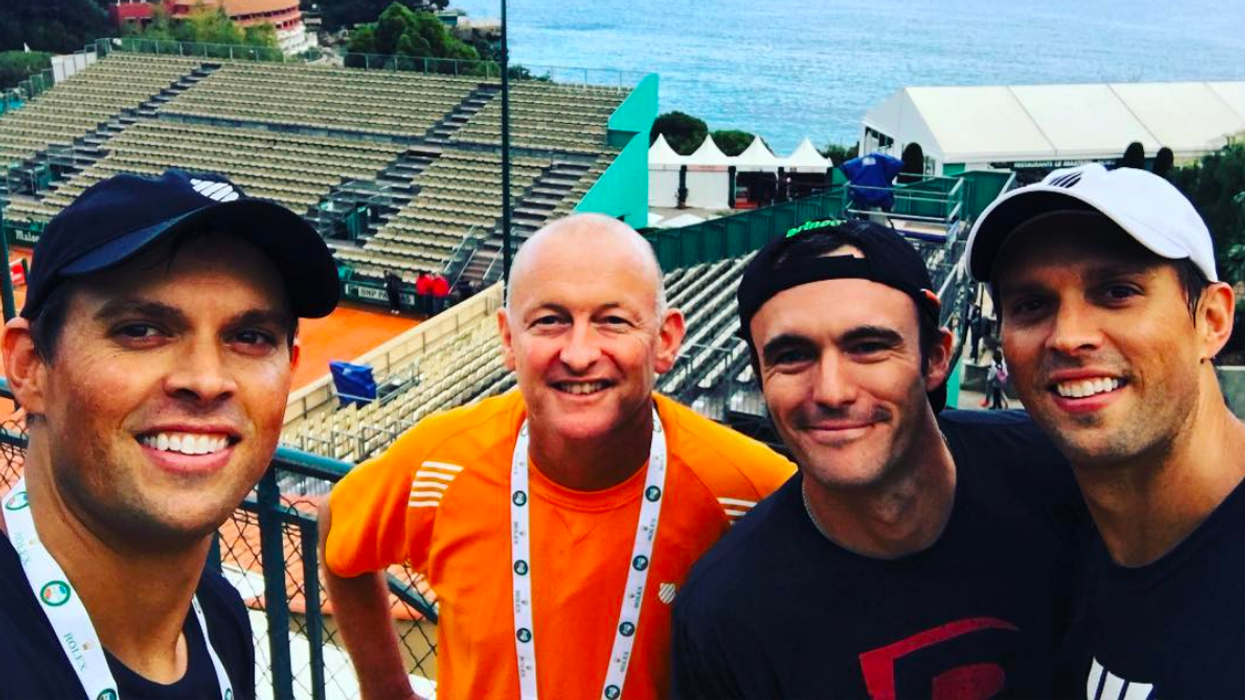

![Rig Rundown: AFI [2025]](https://www.premierguitar.com/media-library/youtube.jpg?id=62064741&width=1245&height=700&quality=70&coordinates=0%2C0%2C0%2C0)












 Shop Scott's Rig
Shop Scott's Rig
![Rig Rundown: Russian Circles’ Mike Sullivan [2025]](https://www.premierguitar.com/media-library/youtube.jpg?id=62303631&width=1245&height=700&quality=70&coordinates=0%2C0%2C0%2C0)




